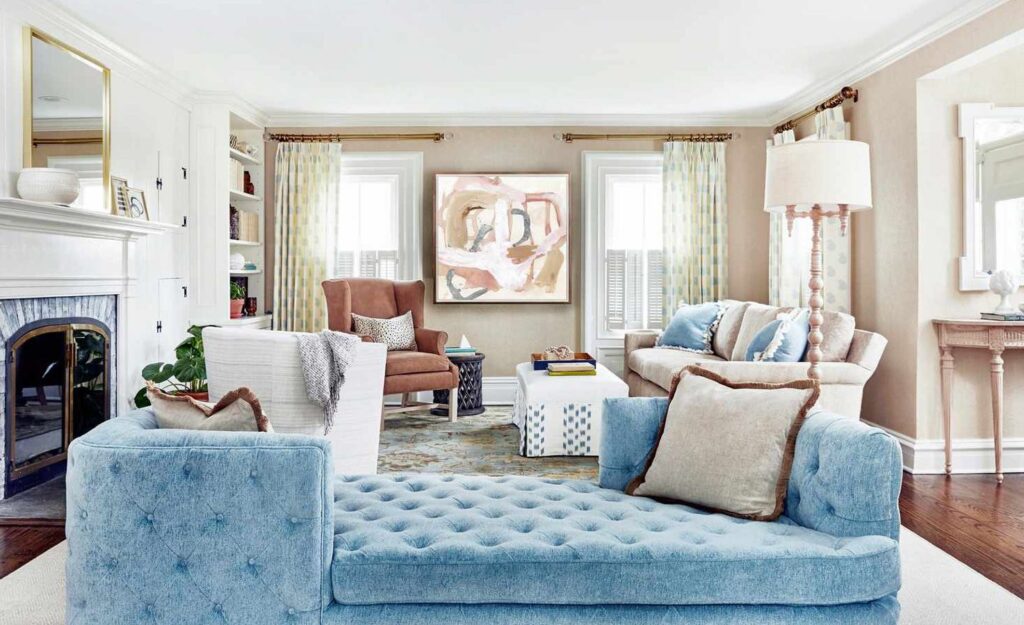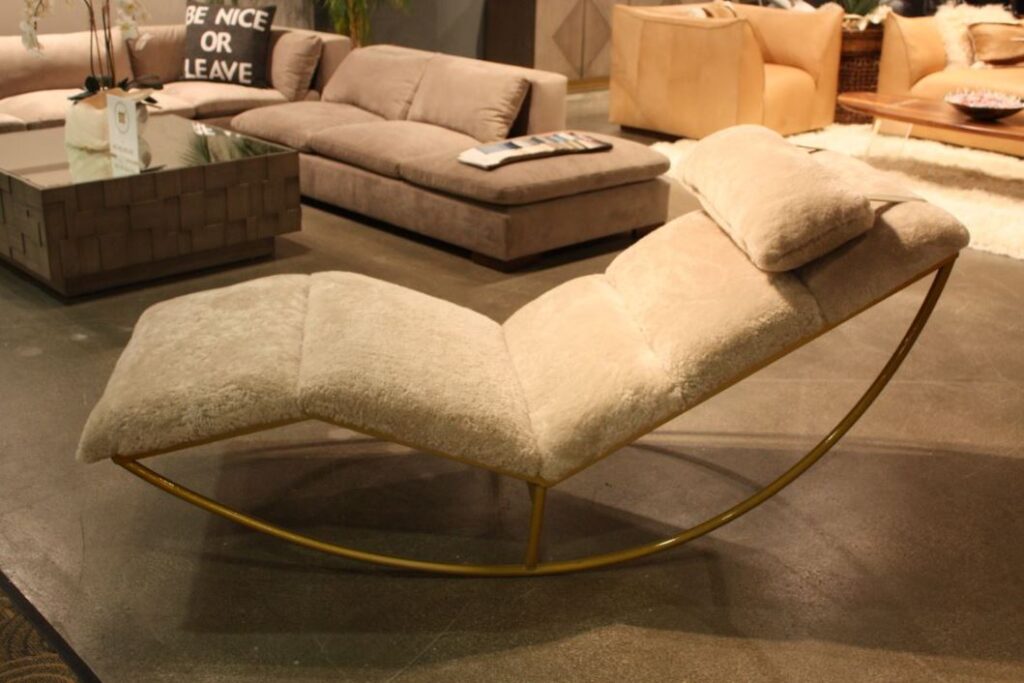10 Creative Ways to Arrange Your Lounge Furniture for Maximum Comfort and Style
A lounge, a focal point of relaxation and social interaction in any home, holds significant sway over our living experience. The arrangement of your lounge furniture can be a creative expression, shaping the room’s atmosphere while melding style with comfort. Your furniture’s configuration, positioning, and selection are pivotal in how inviting and functional your lounge feels.
Whether you are a design enthusiast looking to revamp your living space, this guide will explore ten innovative ways to arrange your lounge furniture. These ideas maximise comfort and style, helping you transform your lounge into a harmonious sanctuary. From understanding the dynamics of your space to experimenting with non-traditional elements, let’s delve into making the most of your lounge’s potential.

Understanding Space
Creating a comfortable and stylish lounge starts with a clear understanding of the space you have. The first step is assessing room dimensions. By measuring the lounge and identifying focal points, you can develop a strategic plan for arranging your furniture to maximise comfort and style. Focal points, such as a fireplace or a large window, guide the arrangement and draw attention, creating balance and harmony in the room.
Understanding the balance between negative and positive space is crucial. Negative space refers to the empty areas around and between furniture, while positive space encompasses the furniture and décor. Striking a balance between the two creates a room that feels neither cluttered nor sparse but just right. The equilibrium ensures a flow of energy and movement, enhancing the overall aesthetic and functionality of the lounge.
Arrangement Ideas
One of the fundamental concepts in design is symmetry, which brings a sense of order and tranquillity. A symmetrical setting in your lounge can provide visual appeal and comfort. By mirroring furniture and décor on either side of a focal point, you create a cohesive, well-thought-out room, inviting relaxation and conversation.
Diagonal alignment can be a game-changer for those looking to add a dynamic touch. Placing furniture diagonally, instead of parallel with the walls, enhances flow and movement within the space, making the room appear larger and more inviting. It’s a bold move that breaks the monotony and adds an element of surprise.
Layered seating is about combining different seating options to build a cohesive lounge area. Incorporate sofas, armchairs, and poufs to cater to various seating preferences and needs. This arrangement encourages interaction while providing ample seating, allowing the lounge to accommodate large gatherings and intimate conversations.
The lounge is a social hub, and creating a centralised conversational area fosters communication and interaction. Arrange your furniture around a central point, like a coffee table, ensuring each seat faces the centre. This layout encourages eye contact and conversation, making the space more welcoming and sociable.
Don’t let the corners of your lounge go unnoticed. Corner arrangements are excellent for maximising space and creating intimate seating nooks. Placing a cosy chair and a side table in a corner creates a private reading spot or a quiet area for reflection, adding versatility to your lounge.
Floating furniture means placing furniture away from the walls, creating a sense of openness. This arrangement frees up wall space for artwork or shelving, making the room feel spacious and airy. It also allows for better traffic flow and more varied seating arrangements, enhancing the room’s functionality.
Incorporating multifunctional furniture is a smart way to maximise space and utility. Pieces like sofa beds, storage ottomans, and extendable tables offer flexibility, allowing your lounge to adapt to different needs and uses. This arrangement idea is especially beneficial for smaller spaces where versatility is key.
Creating different zones and areas within the lounge helps define functionalities and activities. You might have a reading nook, a TV-watching area, and a conversation spot, all connected through design elements like rugs and lighting. This approach ensures that each lounge area has a purpose, making the space more organised and user-friendly.
Why stick to the norm? Incorporating non-traditional elements, such as unconventional furniture or unexpected materials, enhances visual interest and functionality. Think of using a trunk as a coffee table or hanging a hammock chair – such unique elements add a creative flair, making your lounge stand out.
Lastly, don’t shy away from combining textures and materials. A mix of smooth, rough, soft, and hard brings a rich and diverse look to your lounge. Balancing different materials also affects comfort – plush fabrics invite relaxation, while sleek surfaces add a modern edge.
Consideration of Style and Theme
When arranging your lounge furniture, it’s essential to match the furniture arrangement with the overall theme of your home. Whether you’re inclined towards a modern, vintage, minimalistic, or eclectic style, the furniture arrangement should complement and enhance the chosen theme. For instance, a modern style may call for sleek lines and minimalistic furniture, while a vintage theme might be better suited to layered textures and antique pieces. Adjusting the arrangements according to the style can create a harmonious and cohesive look, making the lounge a seamless part of your living space.
Practical Tips and Tricks
Beyond the furniture arrangement, several practical elements can elevate the comfort and style of your lounge. Utilising rugs, lighting, and accessories can define spaces, create ambience, and add character. A well-placed rug can demarcate areas, lighting can set the mood, and accessories bring in personality and vibrancy.
Adjusting arrangements for traffic flow and accessibility is equally vital. Ensure that there is enough space around the furniture for movement and that each seating spot is easily accessible. This practical consideration enhances the functionality of the lounge and ensures a welcoming environment for everyone.

Lastly, don’t forget to experiment with height and scale. Mixing different sizes and heights of furniture and décor can create visual interest and balance. Play around with tall bookshelves, low coffee tables, and varied artwork to achieve a dynamic and layered look in your lounge.
Personalisation and Adaptation
Your lounge should be a reflection of your personality and preferences. Tailoring arrangements to personal preferences means incorporating elements that make you happy and comfortable. Personal touches make the lounge truly yours, whether it’s a favourite colour, a cherished piece of art, or a comfy armchair.
Moreover, our needs and preferences and our living spaces evolve. Adapting arrangements to suit changing needs and trends is essential for maintaining a relevant and comfortable lounge. Stay open to rearranging furniture, swapping out pieces, and experimenting with new styles to keep your lounge fresh and inviting.
Crafting a lounge embodying comfort and style is a journey of creativity and practicality. By understanding your space, experimenting with different arrangements, considering the overall style, and incorporating practical and personal elements, you can create a lounge that is a haven of relaxation and reflects your unique style. The creative arrangement ideas explored in this guide offer many possibilities for transforming your lounge into a harmonious and stylish sanctuary. Remember, the ultimate goal is to craft a space that feels authentically yours – so don’t be afraid to experiment, personalise, and adapt to achieve a lounge that you truly love. Happy arranging!
Leave a Reply